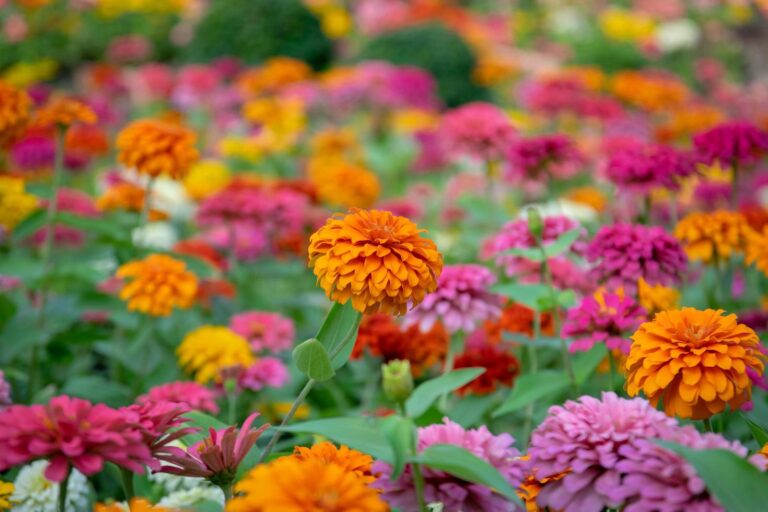To Snip or Not to Snip?
Flowers That Benefit from Deadheading — and Those That Don’t
I first learned about deadheading from my mom when I was 14 years old. At first, the word “dead” alarmed me—I thought she was somehow harming her plants!
But as I got older, I came to understand its purpose, and today, deadheading has become one of my favorite late spring rituals. In this post, we’ll cover the basics of deadheading and highlight which flowers benefit most from it.
⸻
What Is Deadheading & Why Do It?
Simply put, deadheading means removing spent (old or faded) flowers to encourage new ones to grow.
Making deadheading a regular part of your garden routine helps promote:
• Continued flower production
• Longer bloom periods
• A cleaner, neater appearance in the garden
Quick Tip: You don’t need fancy tools! Sharp scissors or even just your fingers are often enough to deadhead most flowers.
⸻
7 Flowers That Benefit Most From Deadheading
1. Petunias
Deadheading encourages bushier growth and continuous blooming—two things that make your garden shine. If your petunias look leggy, deadheading can help reverse that.
2. Zinnias
Zinnias thrive with deadheading, producing thicker, more vibrant blooms that last well into fall.
Bonus tip: Want a how-to?
Follow this easy guide to keep your zinnias blooming at their best.
3. Geraniums (Pelargoniums)
Regularly removing old geranium blooms keeps them tidy and helps redirect energy toward producing fresh flowers instead of seeds.
4. Marigolds
Deadheading marigolds leads to ongoing blooms and also helps prevent common issues like mildew and seed drop.
5. Cosmos
Cosmos are easy to deadhead thanks to their delicate stems. Removing old blooms keeps them flowering throughout summer.
6. Coneflowers (Echinacea)
Early deadheading improves bloom quality and quantity. Later in the season, though, consider leaving some spent blooms for birds to enjoy!
7. Blanket Flower (Gaillardia)
Frequent deadheading keeps these cheerful flowers blooming longer and helps prevent problems from decaying blooms.
To Snip or Not to Snip?
Flowers That Benefit from Deadheading — and Those That Don’t
I first learned about deadheading from my mom when I was 14 years old. At first, the word “dead” alarmed me—I thought she was somehow harming her plants!
But as I got older, I came to understand its purpose, and today, deadheading has become one of my favorite late spring rituals. In this post, we’ll cover the basics of deadheading and highlight which flowers benefit most from it.
⸻
What Is Deadheading & Why Do It?
Simply put, deadheading means removing spent (old or faded) flowers to encourage new ones to grow.
Making deadheading a regular part of your garden routine helps promote:
• Continued flower production
• Longer bloom periods
• A cleaner, neater appearance in the garden
Quick Tip: You don’t need fancy tools! Sharp scissors or even just your fingers are often enough to deadhead most flowers.
⸻
7 Flowers That Benefit Most From Deadheading
1. Petunias
Deadheading encourages bushier growth and continuous blooming—two things that make your garden shine. If your petunias look leggy, deadheading can help reverse that.
2. Zinnias
Zinnias thrive with deadheading, producing thicker, more vibrant blooms that last well into fall.
Bonus tip: Want a how-to?
Follow this easy guide to keep your zinnias blooming at their best.
3. Geraniums (Pelargoniums)
Regularly removing old geranium blooms keeps them tidy and helps redirect energy toward producing fresh flowers instead of seeds.
4. Marigolds
Deadheading marigolds leads to ongoing blooms and also helps prevent common issues like mildew and seed drop.
5. Cosmos
Cosmos are easy to deadhead thanks to their delicate stems. Removing old blooms keeps them flowering throughout summer.
6. Coneflowers (Echinacea)
Early deadheading improves bloom quality and quantity. Later in the season, though, consider leaving some spent blooms for birds to enjoy!
7. Blanket Flower (Gaillardia)
Frequent deadheading keeps these cheerful flowers blooming longer and helps prevent problems from decaying blooms.

